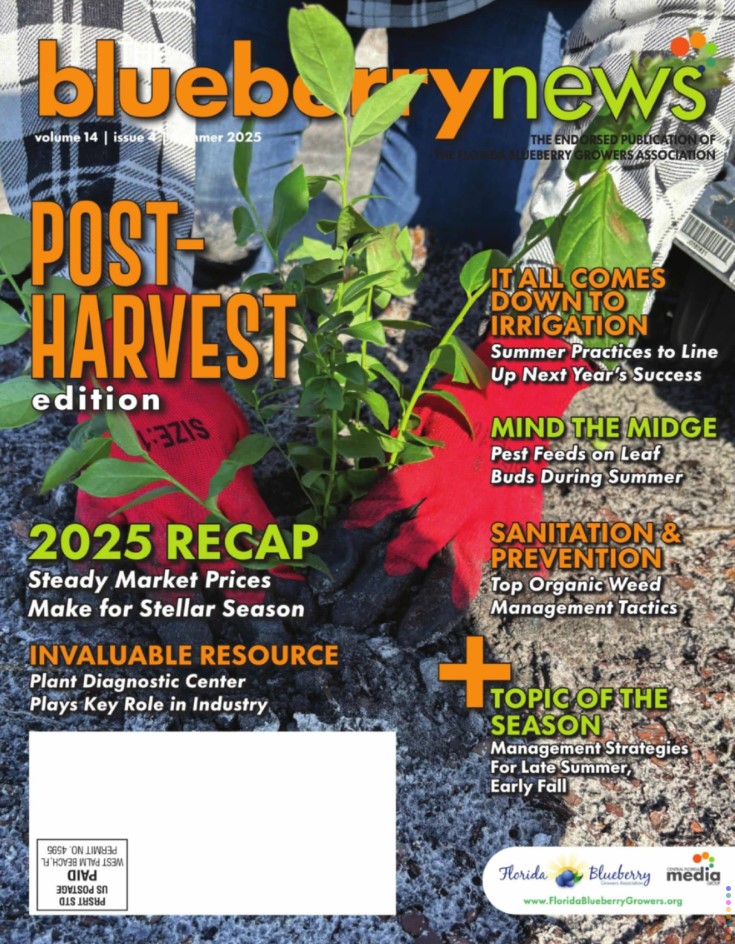from the 2017 Southeastern Blueberry Integrated Management Guide
Before making insecticide applications, monitor insect populations to determine if treatment is needed. If insecticide application is necessary:
1. Use selective pesticides to reduce risk to pollinators and other non-target beneficial insects.
2. Read and follow all pesticide label directions and precautions. The label is the Law! The EPA now requires the addition of a “Protection of Pollinators” advisory box on certain pesticide labels. Look for the bee hazard icon in the Directions for Use and within crop-specific sections for instructions to protect bees and other insect pollinators.
3. Minimize infi eld exposure of bees to pesticides by avoiding applications when bees are actively foraging in the crops. Bee flower visitation rate is highest in early morning. Apply pesticides in the late afternoon or early evening to allow for maximum residue degradation before bees return to the fi eld. Bee foraging activity is also dependent upon time of year (temperature) and stage of crop growth. The greatest risk of bee exposure is during bloom.
4. Minimize off-target movement of pesticide applications by following label directions. Do not make pesticide applications when the wind is blowing towards beehives or off-site pollinator habitats.





